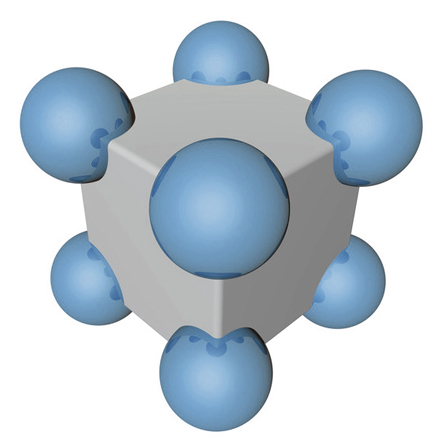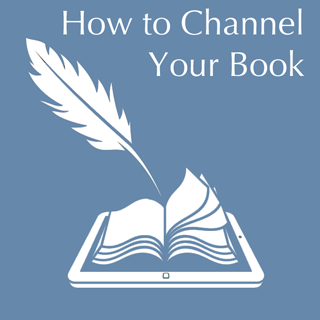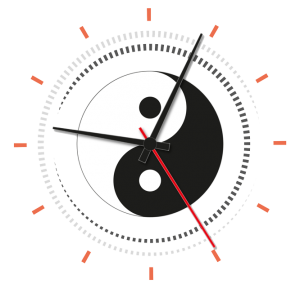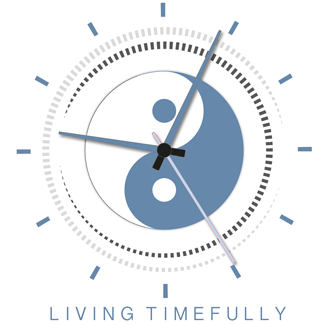by Tom Evans | Apr 4, 2014 | Expanding, Illuminating
 When I first came across the idea of channelling, like most people I thought it was to do with connecting with the recently departed. Accordingly, when someone told me that I must have channelled my first book, I took it with a pinch of salt.
When I first came across the idea of channelling, like most people I thought it was to do with connecting with the recently departed. Accordingly, when someone told me that I must have channelled my first book, I took it with a pinch of salt.
Just a few years later, I not only channel daily but I find myself teaching other authors how and why to do it.
Channelling is not a special gift, we all can do it but for many reasons it has been suppressed and sometimes is treated with derision in our society. Fortunately, the word has entered popular culture, with many pop and film stars saying that they channelled their performances.
Virtually all the literary greats will testify that they did not know where their Muse exactly came from but allude to it being external to them.
We also have this gift innately but somehow lose it. For example, seeing a child immersed in a drawing reminds me of the famous Picasso quote …
“All children are artists. The problem is how to remain an artist once we grow up.”
By learning to channel, we can get back to this child-like state of awe and wonder, but with all the experience and wisdom we’ve amassed over our life times.
Passive vs Active Channelling
I found out there are two types of channelling. Passive channelling is where people let themselves be taken over. When this happens, sometimes the literary output tends to be a bit repetitive, and quite often frankly a bit dull.
When you actively channel, all that happens is that your conscious mind gets out of the loop and you silence your inner critic. You don’t lose control from directing the flow, shape or semantics of the work. You just get ‘in the zone’.
What’s more, you come out with stuff that you amaze yourself with, both from the perspective of quality and the level and detail of information that you didn’t know you knew. This applies equally well to musicians and artists as it does to writers. I’ve lost count of the time when writing where I’ve got access to information that I could not have possibly known which latterly I’ve discovered was true.
So what are you channelling?
Again the common misconception is that we channel recently departed spirits and indeed some people do. More commonly people channel their guides and some say they channel Ascended Masters, angels and archangels. I’ve worked with authors who channel elementals like fairies and others that channel the Sun, Earth, Moon and stars. Again, whether this is all true or not is down to one’s personal belief. As it happens, my favourite theory is that we channel our future selves who of course we strongly morphically resonate with.
Now I don’t doubt this is what people are experiencing but I feel this is likely to be more personal intepretation than fact. What is more likely to be happening is that we are connecting with levels of consciousness that we struggle to explain in our language and three dimensional reality so they end up with names that sound a bit far out. Also, sometimes when people lay claim to channelling x, y or z, all too often, ego sneaks in to play and common sense goes out of the window. Two elements that are not overly healthy in the creative writing process.
Note that some people claim that, “It must be true as they channelled it”.
I prefer to say, “I channelled this so please take it with a pinch of salt but I hope it either proves useful or entertaining.”
I am agnostic about who is channelling what exactly and prefer to focus on the output. What seems to work a treat in this regard is not channelling randonly but giving whatever source is feeding you with information to a structure. In my ecourses and workshops, I use Mind Maps. They have the added bonus of bypassing that inner critic by busying the left hemisphere so the right can be holistic.
It’s worth noting that you are also not limited to channelling the words (or images or sounds). You can also ‘channel’ or conjure up the perfect publisher, sales and marketing contacts, speaking engagements and your readership.
So how do you go about it?
Regular meditative practice is the key. This doesn’t mean sitting cross legged on the floor for an hour chanting “Om”. A good walk so long as you primarily look up is good enough. There are also some great Meditation Machines you can buy nowadays.
Undertaking a yoga, Pilates, Tai Chi or Qi Gong class is also a great way to immerse yourself in the state that is ideal for channelling.
Nowadays, in a busy world, a good entry point to channelling is learning How to Quieten Your Mind
And, if you want to unleash the book inside you, learn How to Channel Your Book

by Tom Evans | Mar 7, 2014 | Timing
 Have you ever been in that special zone where everything happens magically and in the perfect order? The tasks at hand seem to get done easily in the time available.
Have you ever been in that special zone where everything happens magically and in the perfect order? The tasks at hand seem to get done easily in the time available.
Have you ever had a day when things don’t go according to plan? The world seems out to get you and you feel like you are pushing water uphill.
These two states of being are of course opposite ends of the spectrum and might inspire you to thing you had better improve your time management. Now the vast majority of time management systems focus on better prioritization and minimalisation of interruptions. This is a Good Thing.
There is however a completely lateral way of getting more done in less linear time and that’s to change the speed and nature of your thoughts so you become more productive and creative.
The perceived passage of time is affected by our consciousness, attention and awareness. We can make use of this phenomenon when approaching creative tasks to changing our relationship with time at a fundamental level.
Here’s five mindful hacks to get more done in less time – together they introduce a new way of being and doing – that of timefulness!

Hack #1 : Breathe Like a Baby
The life expectancy of a giant tortoise is around 120 to 140 years and an elephant lives for around 80 to 90 years. While our own life expectancy is increasing, in the Western world at least, go back 150 years and it was between 50 and 60 years. Now here’s the thing. A tortoise breathes around 4 times every minute. An elephant breathes around 8 times every minute and we breathe around 12 to 15 times every minute.
So the first tip to changing our relationship with time is to breathe more slowly. To begin we need to use our diaphragm and to do belly breaths. This of course is how a baby breathes. We’ve just got out of the habit.
Now you don’t have to do it all the time but just doing 7 to 9 deep and slow breaths at the start of the day is enough to slow things down. You can also do it before any creative task or if you have been stressed. It works especially well if you are running late for a meeting. By breathing more slowly, we ‘expand’ time.
What’s even more magical is that this technique works in groups too or when working one to one with clients. This technique costs nothing to try and it’s even possible that we can lose weight this way while increasing our life expectancy

Hack #2 : It’s Mad Not to Meditate
Before I started meditating about 10 years ago, I thought it was both a waste of time and that there was no way I could make my over-active mind go quiet. Nowadays, if I miss my morning meditation, I actually have a worse day.
It might sound counter-intuitive but by taking 10-20 minutes of ‘me time’ each day, you claw it back in bucket loads throughout the day. You become less stressed and notice serendipities. So one chance encounter can save you hours in searching for just the ‘right thing’. It’s also reckoned the health benefits alone make it worthwhile and that each minute you spend in meditation gets added to your potential longevity.
Meditation too is not about sitting in a dark room in the lotus position chanting “Om”. A walk in nature or a park is a great tonic too. Be sure to look up though as this takes the mind out of its internal chatter

Hack #3 : One Thought at A Time
The normal human mind can only have one thought at a time. So just think about what you are thinking about right now and the thing you are thinking about gets replaced with the thought you are having about that thought.
Just pause for a moment, read the above sentence again and just check the validity of this notion.
Armed with this knowledge about the way we think, this gives us the most amazing insight when it comes to our time management. If we are focused on anything else other than the task in hand, time will slip away from us.
Accordingly, these are the three main bandits time:
• Fretting over the past
• Worrying about the future
• Thinking about something else other than what you are working on
So the key to making the most of our time is to ‘get in the zone’ and focus solely on what you are doing right now. When thoughts other than the ones we want to think arrive, a simple way to make them go away is to ask them about their purpose. Great enlightenment comes from this simple task.

Hack #4 : One plus one can equal three
It is an urban myth that the left brain is logical and the right brain is creative. Both sides of our brains are involved in both activities. When it comes to time, it is now thought there is a significant difference in how each hemisphere interacts with it. It appears that the left hemisphere (for most of us) sits inside space and time and that the right hemisphere sits everywhere and ‘everywhen’ else.
When we are ‘in that zone’ what is happening is that both hemispheres are working at the same time. The left brain handles the detail while the right brain holds the whole of the work ‘in mind’.
If we get bogged down with ‘left brained’ self doubt, our productivity drops significantly. If we sit dreaming about fame and fortune, our work doesn’t get done either. To get both brains working together, just breathe through alternate nostrils five times before embarking on a creative activity.

Hack #5 : Inner Mind Time
If you have ever regretted not trusting your gut, here’s why. It is now known our gut mind, which contains more neurons that a cat’s brain, operates about 5 to 10 seconds ahead of our conscious mind. It is an active mind center involved with decision making and getting us to pay attention to what is important to us. This might be an oncoming car as we are about to step off the sidewalk or something on a web page we are scanning.
So by forming a new relationship with out gut mind, we not only save time but we can be ‘ahead of time’ too. Our gut likes to be talked to and consulted. Say ‘Hi’ to it a few times a day and ask for its advice. You will make friends with an old and faithful companion.
So, by being mind-full not mind-less, and by engaging fully with both of our brain hemispheres and our inner mind centers, we get into that space where our productivity soars. The other collateral benefit of using these techniques is that we generate an intention field which seems to stop all interruptions coming in. What’s not to like?
by Tom Evans | Feb 7, 2014 | Timing
The normal human mind is only capable of having one thought at a time. Just think about that sentence for a moment to validate this.
Note of course that there is nothing normal about the human mind. As far as we know, it’s the only bit of self-aware matter in the Universe. It’s also capable of reprogramming itself in an instant.
So with this strange ability to only think one thought at a time, if our mind wanders away from the task we are focusing on, our efficiency will drop. This basic aspect of our consciousness leads us to the real reason we become inefficient. When our mind wanders, our productivity drops accordingly.
So think about your thoughts in a typical day. Some of them will be mulling over past events. Perhaps you’ll think about conversations that could have gone better. If someone crossed your boundaries, you can spend hours agonising about it. You might of course be harking back to pleasant times like an enjoyable meal, a fabulous holiday or how you met the love of your life.
Alternatively you may be planning and rehearsing a speech or conversation for a day or more ahead. You may be thinking of what to cook for supper or longing for the weekend to arrive more quickly and the working week to finish. To add to all of this, there are all those pesky interruptions, diversions and distractions.
As a picture says 1000 words, this pie chart tells the story. You can also make your own up based on a typical day – a most illuminating exercise.

Such mind meanderings are of course normal and nothing to worry about per se. What goes on in our mind however can affect our physical and mental well-being. If you find they are dragging you down, one of the many ‘talking therapies’ might help.
If such thoughts are merely affecting your creativity and productivity, there is a simple way to get back in the groove. All we have to do is to learn to meditate and take some ’me time’ out every day. When I first did this 10 years ago, I thought I could never make my over-active mind go quiet. I was a busy guy too and didn’t have 10 or 20 minutes to waste every day. Nowadays if I don’t meditate, I have a worse day. When I do take some ‘me time’, I find the serendipities generated save the time back in spades.
There are two types and levels of meditation too, with one leading to the other. The first method relies on use meditating on a thing like the breath, a flame, a sound or a mantra. Just like counting sheep at night, this has the effect of numbing our thoughts into submission, by one thought replacing the last and so forth.
With the second method, we meditate on each thought as it comes in and ‘talk’ to it. We can ask it where it came from and why and ask it politely to go away or to be quiet. While this might sound like the internal ramblings of a mad person, it has remarkable results when applied in our waking days. It’s known as the Quantum Collapse of Thought.
If our mind wanders off focus with thoughts of the past or the future, we can use two simple strategies to get our minds back to the task in hand. For thoughts of the past, we can thank and acknowledge them for the lesson they have brought. For thoughts of the future, we can ask them to remind us later of their message at at time which is just perfect.
This simple thought clearance procedure works a treat and costs nothing to experiment with. Just try it for a few days and report back here by way of comment how you get on. If you have an alternative technique, let us know too.
After a few weeks of practicing this procedure, you’ll find you become luckier too!
What’s not to like?
If you want to speed up this process, take my new course, learn how to enter the meditative state with your eyes open and watch your efficiency and productivity sky rocket !!
Start Living Timefully

 When I first came across the idea of channelling, like most people I thought it was to do with connecting with the recently departed. Accordingly, when someone told me that I must have channelled my first book, I took it with a pinch of salt.
When I first came across the idea of channelling, like most people I thought it was to do with connecting with the recently departed. Accordingly, when someone told me that I must have channelled my first book, I took it with a pinch of salt.


 This short video explains where AHA Moments come from and why they are Whole Mind and Whole Body events …
This short video explains where AHA Moments come from and why they are Whole Mind and Whole Body events …
 This short video is a sample of the many illuminations available in my new ecourse Tuning into AHA Moments. It shows how what we are thinking and feeling can block inspiration and creativity in its tracks.
This short video is a sample of the many illuminations available in my new ecourse Tuning into AHA Moments. It shows how what we are thinking and feeling can block inspiration and creativity in its tracks.

